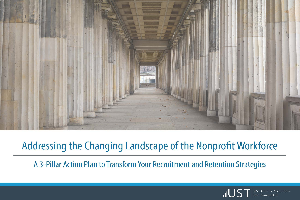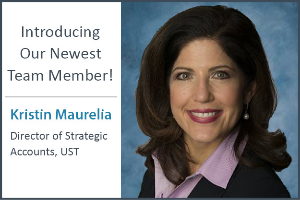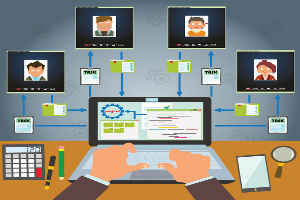
It took a man of vision, optimism, and great will to lead the United States out of the Great Depression and through World War II. Yet, his greatest struggle was a private one, a battle he would win for all of us. In 1921, Franklin Delano Roosevelt contracted poliomyelitis-also known as Polio. Polio was a highly contagious virus that attacked the central nervous system, withering and paralyzing muscles-killing many by robbing them of the ability to breathe.
After being elected governor of New York, President Roosevelt declared a new war—one against polio. He founded the nonprofit National Foundation for Infantile Paralysis. Popular film and radio star Eddie Cantor dubbed the effort “The March of Dimes” and urged Americans to act, stating, “The March of Dimes will enable all persons, even the children, to show our President that they are with him in this battle against this disease. Nearly everyone can send in a dime, or several dimes.” Over 80,000 letters filled with dimes, quarters, and dollars created a “silver tide which swamped the White House,” totaling $268,000. The March of Dimes carries on to this day.
Today, a dime seems a flimsy means to ignite a fundraiser. A candy bar worth a dime long ago now runs about $2.39. Still, consider the fact that if you were to take an empty two-liter plastic soda bottle and fill it with dimes, you’d have about $700 in donations. Now, what if you put ten of those bottles out in the right places for interested people to fill? That is what The March of Dimes did with their donation cards placed at cash registers everywhere. That is what the Ronald McDonald House does with its collection bins built right underneath the drive-thru window.
New and small nonprofits often have few assets beyond the skills and passion of their founders and volunteers. They may not have the equipment, a regular venue, a budget for props, rental equipment, food, entertainment, video systems, or fabulous prizes but the one thing they do have is determination. Following are some popular types of inexpensive fundraisers, some of which don’t even cost a dime!
Affiliate Fundraisers
Affiliate fundraisers generate passive income through event-free fundraising. It’s all handled online. Simply partner with an online shopping program affiliated with retailers that are popular with your supporters and then ask your supporters to make purchases through the program’s app or browser extension. All contributions will come from the retailers, while your supporters do nothing but make regular purchases, taking advantage of the same sales and coupons they normally do. It costs them nothing extra. Amazon is a great place to start since 100,000’s of people shop the site daily.
Kroger, America’s largest grocery chain, offers a community rewards program that you can join for free as an individual shopper. All you have to do is register your nonprofit. Theneach time your supporters swipe their rewards card at a local Kroger (their stores are everywhere under many different names), your nonprofit gets a percentage of the sale, which is paid out quarterly. It should be fairly simple to persuade your team, your supporters, your friends, and your family to link their rewards cards with your nonprofit. For more information, click here.
Other companies that offer Affiliate programs include ShopRaise and Fundraising.com. Beginning this year, Amazon has discontinued its AmazonSmile Program.
Charity Navigator suggests doing your homework to find the right affiliate program for your nonprofit. Most can get started in three steps:
Bake Sales
Forever popular, bake sales enjoy good ROI because members and supporters supply the goodies. Ask participants to donate their best baked goods (preferably pre-wrapped for sale). Stake out a location or event with good foot-traffic to hold the sale. Pastry sales do especially well around breakfast time.
Cook-Offs
There are so many great eats to put in contention: pie, chili, BBQ, cookies, tacos, cake, preserves, and more! Invite everyone to enter their fabulous dishes (in very large qualities) in a cook-off event for top honors. Charge participants a fee to sample and vote on the best dishes. The biggest challenge with a cook-off is advertising and luring chefs to participate. You can put a fork in both problems by offering the contestants an advertising opportunity where you can promote them heavily as part of the event.
Google Ad Grants
Google helps nonprofits raise the visibility of their high-value pages through itsGoogle Ad Grants program. They’ll reward your organization with up to $10,000 in ad credits each month when you apply and get approved. You can use those credits to get ad space on search results pages for the most vital keywords for your mission. Additionally, you can . . .
There are some eligibility criteria your organization must meet to become, then stay eligible. You must also research keywords to connect you with the right prospects. If you want to make the most of your Google Grant money, you might outsource the work to a Google Grants agency, which handles everything including the initial application, keyword research, and account reactivation.
Matching Gift Drives
Matching gifts are a part of many corporate philanthropy practices. Anyone who works for a major corporation, likely offer this as an employee perk. Through these programs, companies will match a portion (usually 50% or more) of the donations their employees give to nonprofits. It’s smart to partner with a matching gift database provider (such as Double the Donation) to help supporters find their matching gift opportunities.
Coin Challenges
The March of Dimes began as a coin challenge. Coin Challenges can also be fun. They cost next to nothing to set up, and if today’s coin shortage remains an issue, paper currency is just as good.
One of the cutest is Make-a-Snake, great for school or the next reptile show. Encourage schools to form teams that will collect spare change from around their neighborhood by going door to door with an adult. On the designated day, children bring the cash to the collection event. Then, each team of kids constructs a “snake” with their dollars and coins. The group creating the longest snake wins!
Collection jars or bottles branded for your nonprofit can be left with friendly businesses to encourage donations at check-out. Schools have issued coin challenges for a variety of charities, often times competing against other schools in the area. Continual updates on social media can keep the fire burning under this contest to the very end.
Timed Campaigns
You can turn your fundraiser into an episode of “24.” Day-long fundraising campaigns, AKA giving days, tend to bring in substantial revenue despite the short timeframe. By sustaining urgency through social media and other announcements, supporters are likely to be inspired to donate. Give the challenge a popular TV or movie action theme to add to the fun. It pays to be suspenseful, whether you do it in the hallways of your high school or online with a web page or app that ticks down the seconds.
Polar Plunge
For the brave and daring, nothing beats a dip in freezing water. How long can you hold out? You and your supporters can take pledges linked to endurance and then during the event, you’ll plunge into the icy water and complete to the be last one out. The longer you stay in, the more money you raise from pledges.
To encourage participation, ask local vendors to provide necessities such as towels, blankets, warm drinks like hot chocolate or cider, hand warmers in exchange for sponsorship promotion and bragging rights. Also, don’t forget waivers for your participants to sign. For the best results, host your Polar Plunge around the holidays. Each year, this unique fundraiser can draw a larger, more festive crowd. Be sure to leave out donation boxes for thrill-seeking onlookers to put in their two dimes.
These are but a handful of many inspired ideas for fundraising on a dime and we hope you are finding some inspiration for your future fundraising efforts.
This blog post was written by Amélie Frank, consulting copywriter to UST. To learn more about Amélie’s professional portfolio you can find her online at https://www.linkedin.com/in/amelie-frank/

Voluntary turnover harms your bottom line. Your team must focus on providing meaningful work, goal-setting, and communicating that you value their worth. Please note: Masking difficult work conditions with “fun” items like free beverages will not build the employee engagement necessary to break many organizations’ cycle of preventable terminations.
Consider the following sensible suggestions to help your team reduce employee turnover:
Know Your Stuff with Workforce Analytics
You might notice your managers losing employees, but do you know which few are high on the retention scale? Take care to standardize your metrics across the organization, using the same rules for all teams. Performance management software can help you track conversations and responses. Your job profiles will be more accurate, and you can set clear expectations of others. Keep everyone on the same page regarding meeting notes and performance evaluations. Determine which managers have markedly kept employees engaged, so you can set up a program allowing them to teach those skills to other managers.
Make the Most of Personalities
Teams excel when a variety of key personality types are orchestrated. If you blend risk-takers with detail-oriented individuals, you’ll benefit from an innovative team that can finish projects. Too many of any one type of personality, and you risk losing innovation or failing to meet project completion deadlines. Blend these two with some people-oriented relationship builders to help everyone work together. When selecting personality assessment tools, choose one that is appropriate for the work environment, such as trengthsFinder, the DiSC assessment or the Core Values Index.
Find the Right People
It may seem like a lot of work to define skills, values, and personalities that work best for the roles you need to fill. And it’s even more work to confirm that your pay and benefits are within reasonable benchmarks for your region and industry. But hiring someone who stays for years will make it worthwhile.Repeatedly filling a slot with wrong-fit people will cost you money, time, and missed deadlines.
If an employee has been given ample time, onboarding, and additional training but just can’t finish projects or fit your values and culture, you need to let him go. Don’t give poor-fit workers the time to frustrate and drive away your productive staff members. The more you find right-fit employees, the less often you’ll be forced into one of these situations.
The Nonprofit Equation
In large part, people do not take employment at nonprofits for the money. They go into it to feel a strong sense of purpose. Just be aware that their initial interest does not solve employee turnover. People burn out. Lack of investment in a workplace infrastructure can leave staff overworked and underpaid—which will demolish employee engagement. Yet, for decades, the “low pay, make do, and do without” culture of the nonprofit sector has prevailed.
Shockingly, more than 80% of nonprofits have no formal retention strategy. They are not prepared to withstand the varied and tangled reasons for their high turnover. There are countless reasons why employees leave, including: low pay, no upward mobility, excessive workloads, lack of career development, missing mentors, lack of growth opportunities, no rewards or recognition, poor leadership, lack of organizational vision, stifled communication, challenging or even hostile culture, inadequate job reviews, long work hours with no flexibility. Nonprofit leaders simply accepted the resulting high turnover as the cost of doing business.
Before you lose another needed staff member, consider these steps to addressing the causes:
Support Their Talents, Capabilities, and Dreams
There is a delicate balance to consider when summing up each employee’s strengths. On the one hand, you don’t want to push your staff members to do things they’re not equipped to handle. For example, a sensitive introvert might not be the best choice to handle cold calling or outbound fundraising approaches. All those rejections might scare them right out of your organization. On the other hand, you must do your best to avoid unconscious bias in project assignments. If you think someone might be unable to handle technology because of their age, think again. The same goes for gender, race, country of origin, or any other unreliable indicator. An employee’s demonstrated strengths are very different from your assumption of an employee’s weaknesses based on gut feelings. So, as you get to know employees, follow their work, and talk with them about their career goals, your genuine knowledge of their talents, skills, interests, and career goals can help you guide them in directions where they will feel engaged and motivated to pursue excellence.
Counting the Cost of Turnover
If your nonprofit is struggling with loss of staff, especially as we climb out of the COVID-19 pandemic, developing a robust retention management plan can help. It’s worth your time to learn some metrics and calculations. If you’re not paying attention to your turnover metrics, you’re missing key information necessary for your nonprofit’s ongoing survival. These numbers will help you know with clarity and certainty how your organization is doing and where it needs help.
Metrics can lead you to ask questions and find out why particular people are leaving so you can formulate targeted retention strategies that work. In all, your retention management plan will empower you to determine the extent of your losses, diagnose exactly what’s causing the problem, and then develop strategies you can implement to improve your situation. Ensure your success with the following metrics:
The expense of replacing a single employee can be as high as 60% of her annual salary. Total costs go much higher. And these expenses are harder on smaller nonprofits. No matter how you feel about working with numbers, your organization is counting on you to intervene with crucial information. The numbers you generate will help you influence turnover rates and save your organization from painful costs.
Take the Turnover Tour
There are many reasons that employees leave a job. The first distinction, of course, is whether that turnover was voluntary or involuntary. They require different management techniques. First, be sure to handle the legal requirements for involuntary turnover as well as the root causes of such loss (such as an inadequate job description or depleted talent pool).
Next, pay attention to your voluntary turnover. Among workers who leave voluntarily, there are two types: Functional and Dysfunctional. Watch out for the latter. Functional turnover doesn’t generally hurt an organization, as you’re losing poor performers or easily replaced employees. Dysfunctional turnover, on the other hand, will hurt your nonprofit in many ways. You could lose your high-performers and employees with hard-to-replace skills. You also risk losing your diverse culture, as women and minority group members leave.
The final distinction separates two types of dysfunctional turnover: Unavoidable and Avoidable. If someone leaves to move out of state with their spouse, there will be little you can do to prevent it (though remote work is becoming a widespread new option). Generally, if there is nothing you can do to prevent the change, it’s unavoidable. Every employer will face a certain amount of this. Avoidable turnover is where you must focus. Find ways to improve employee satisfaction. And before you decide if a case of turnover is unavoidable, it might be time to consider how to change it. An employee who quit in the past to start a family may stay with you, now, if your organization starts offering paid maternity leave, on-site childcare, and other working-parent benefits. Some solid number crunching that compares the cost of replacing lost talent against the cost of keeping employees from leaving will help you determine your best case-by-case course of action.
Why They Leave
In considering why employees leave your organization, be sure to consider the following reasons they could be exiting your nonprofit:
• The job is unsatisfying. Your nonprofit has not been able to tip the scale of inducements over their Contributions. Look deeper at their desire to leave and ease of leaving.
• Something better became available. They may or may not be dissatisfied with their current job, but perhaps an even more appealing job was offered elsewhere.
• They’re following a plan. This could involve educational or family goals or some other life transitions that preclude their staying in the job. There will likely be little you can do about these departures unless remote work and flexible hours sweeten the inducements to stay on-staff.
• They’re leaving without a plan. This is an impulsive action. It might be their response to something negative happening at work, such as losing out on a promotion. If they’re leaving due to some preventable workplace experience, such as sexual harassment, you must find better ways to protect your employees.
Why They Stay
Employees who stay in one job for years usually find themselves embedded in their workplace, culture, and community. They’ve grown a thriving network of relationships and professional connections that fulfill both their professional and personal lives. When they leave a job, they often lose most of those long held ties. Here’s where you can support your embedded employees:
The Pandemic’s Influence
Even before the pandemic hit, approximately a quarter of American workers were quitting their jobs in order to find something better. With the economic recovery, many are now seeking to leave after the pandemic ends. Approximately 80% are concerned about career advancement, a common problem in the nonprofit sector. However, it’s even more important to note that 72% of American workers say the pandemic forced them to rethink their skill sets. More than half of those planning to leave their jobs spent the pandemic months training to build new skills. Many did so in preparation to change jobs within the next few months. The reality of moving from job to job to increase your pay and boost your career status reportedly works better for white males than for women or minorities. In fact, this kind of post-pandemic shift carries the potential to worsen income inequality and other inequities, as college educated white workers increase their remote-work options while other employees remain unable to job hop. Take these three steps to maximize employee retention in the post-pandemic economy:
This is an excerpt from UST’s eBook, “3 Essential Practices to Cultivate a Positive Employee Experience” in collaboration with Beth Black, Writer and Editor.

Question: Do we need to investigate rumors of harassment even if no one has made a complaint?
Answer: Yes, you should investigate. A company always has some inherent liability in relation to discriminatory or harassing comments or behavior. The level of liability usually correlates to the nature, severity, and context of the comments, the position of the employee who made them, and what the employer does or does not do about it.
Since you have knowledge of a potential situation, you should investigate the matter and take appropriate disciplinary action if it turns out your antiharassment policy was violated. As you conduct the investigation, document the discussions you have as well as your findings, and reassure those you interview their participation will not result in retaliation.
This Q&A was provided by Mineral, powering the UST HR Workplace. Have HR questions? Sign your nonprofit up for a FREE 60-day trial here. As a UST member, simply log into your Mineral portal to access live HR certified consultants, 300+ on-demand training courses, an extensive compliance library, and more.

It is nearly impossible to find data about compensation increases without inflation figuring in every discussion. In 2022, amidst the first global pandemic in over a century, the average price of gas skyrocketed to $5.75 per gallon (up from a low of $2.68 in May of 2020). The inflation rate for 2022 finished at 6.5%, and today (for the moment), gas prices sit as low as $3.49 in some areas. The federal minimum wage will increase to $9.50 per hour this year, varying significantly from state to state. You can visit The Horton Group page on minimum wages for the state-specific wage rates.
Investopedia.com defines inflation as “a rise in prices, which can be translated as the decline of purchasing power over time.” Among today’s inflationary pressures we can count damage to crops, livestock, lives, and property from recent climate change events, Russia’s invasion of Ukraine spiking the costs of natural gas and grain, and a new strain of avian flu resulting in eggs at $6.00 per dozen. The pandemic itself was a force majeure expense for everyone, with shortages ranging from microchips to baby formula.
And yet, we have emerged from this tough time with an appreciation for U.S. workers that we haven’t experienced since the 1950s. Employers continue to be affected by the great labor shortage and unexpected increases in opportunities, pay, and benefits for workers. Driven in no small part by younger workers unwilling to settle for low-wage gigs, companies have been hiring at significantly competitive salaries and vying for new workers by burnishing their employer brand as emphatically as they do their brand. Things have changed.
BDO USA, a global accounting firm, anticipated that budgets for merit increases in 2022 would hover around 3%, but found that in the final quarter of 2021, the increases topped out just below 4%. The talent shortage had pushed raises into the 4% range. Concurrently, inflation was approaching 1982 levels, which BDO anticipated would push salary increases still higher (the term for this is a wage-price spiral, which Americans last heard about in the mid-1970s). BDO conducted a poll of 440 organizations across multiple industries–including 127 nonprofits—in January and February of 2022 and determined that compensation budgets for all participating companies averaged 5.1%, with nonprofit firms averaging 4.4%. The last time salary-increase budgets exceeded 4% was in 2001.
BDO cautioned, “For nonprofits, this may be a significant shock for their 2022 budgets, as a 4.4% budget increase represents a 47% hike (emphasis also mine) compared to the previously standard 3% budget. It is likely that many organizations are not in a position to increase salary budgets to this degree.”
Journalist and social media strategist Lia Tabackman succinctly laid out the good and bad news in her article in 501c.com, Nonprofit Compensation Battles with Inflation: “Salary and wage increases at U.S. organizations have not kept pace with the rising prices of inflation, and recent trends suggest that in many cases there is financial gain to be had from leaving workplaces that can’t keep up. To put a fine point on it: employers who aren’t able to provide compensation increases that account for inflation risk losing their employees to those who can.”
Fortunately, there are plenty of voices in the for-profit and nonprofit worlds who offer useful guidance in addressing the challenge. BDO suggests inflation’s impact on salary gains will vary by situation. Here are some of their tips to bolster your workforce.
Lauren Mason, senior principal for the Career Business Division at Mercer (an HR consulting partnership) made these recommendations for employers to consider for this year’s compensation planning period:
CapinCrouse, a national CPA and consulting firm serving nonprofits, provided the following from their three-part series Inflation’s Ripple Effect on Nonprofits and Their Employees.
In March 2022, hundreds of nonprofit workers gathered in New York City to demand that the city write a minimum wage of $21 per hour and a 6% cost of living adjustment into the city budget for nonprofit workers. Minor Sinclair, Executive Director of The Center for Progressive Reform (CPR) wrote for The Chronicle of Philanthropy to explain how CPR increased their employees’ wages, beginning with a “contingency fund” to augment salaries to help offset the impact of inflation. Staff members received a $1,000 payment from the fund in spring 2022, which CPR planned to renew in the fall. CPR also upgraded employees’ benefits packages, including a “modest allowance” to help cover utility and internet costs for staff working from home. Employees also received an extra week of vacation to be taken at the end of the year. Additionally, CPR made short and long-term disability-pay plans available to staff.
It is important not to lose sight of the fact that the nonprofit sector is the third largest employer in North America, employing one out of every ten working Americans (about 12.5 million workers). Think about the strength in those numbers. If nonprofits can’t retain quality employees, their fundraising and program delivery will suffer. During tough economic times and good, investing in people pays dividends for your nonprofit’s present and future successes.
This blog post was written by Amélie Frank, consulting copywriter to UST. To learn more about Amélie’s professional portfolio you can find her online at https://www.linkedin.com/in/amelie-frank/.

It is nearly impossible to talk about compensation increases without inflation figuring in every discussion. In 2022, amidst the first global pandemic in over a century, the average price of gas skyrocketed to $5.75 per gallon (up from a low of $2.68 in May of 2020). The inflation rate for 2022 finished at 6.5%, and today (for the moment), gas prices sit as low as $3.49 in some areas. The federal minimum wage will increase to $9.50 per hour this year, varying significantly from state to state. You can visit The Horton Group page on minimum wages for the state-specific wage rates.
Investopedia.com defines inflation as “a rise in prices, which can be translated as the decline of purchasing power over time.” Among today’s inflationary pressures we can count damage to crops, livestock, lives, and property from recent climate change events, Russia’s invasion of Ukraine spiking the costs of natural gas and grain, and a new strain of avian flu resulting in eggs at $6.00 per dozen. The pandemic itself was a force majeure expense for everyone, with shortages ranging from microchips to baby formula.
And yet, we have emerged from this tough time with an appreciation for U.S. workers that we haven’t experienced since the 1950s. Employers continue to be affected by the great labor shortage and unexpected increases in opportunities, pay, and benefits for workers. Driven in no small part by younger workers unwilling to settle for low-wage gigs, companies have been hiring at significantly competitive salaries and vying for new workers by burnishing their employer brand as emphatically as they do their brand. Things have changed.
BDO USA, a global accounting firm, anticipated that budgets for merit increases in 2022 would hover around 3%, but found that in the final quarter of 2021, the increases topped out just below 4%. The talent shortage had pushed raises into the 4% range. Concurrently, inflation was approaching 1982 levels, which BDO anticipated would push salary increases still higher (the term for this is a wage-price spiral, which Americans last heard about in the mid-1970s). BDO conducted a poll of 440 organizations across multiple industries–including 127 nonprofits—in January and February of 2022 and determined that compensation budgets for all participating companies averaged 5.1%, with nonprofit firms averaging 4.4%. The last time salary-increase budgets exceeded 4% was in 2001.
BDO cautioned, “For nonprofits, this may be a significant shock for their 2022 budgets, as a 4.4% budget increase represents a 47% hike (emphasis also mine) compared to the previously standard 3% budget. It is likely that many organizations are not in a position to increase salary budgets to this degree.”
Journalist and social media strategist Lia Tabackman succinctly laid out the good and bad news in her article in 501c.com, Nonprofit Compensation Battles with Inflation: “Salary and wage increases at U.S. organizations have not kept pace with the rising prices of inflation, and recent trends suggest that in many cases there is financial gain to be had from leaving workplaces that can’t keep up. To put a fine point on it: employers who aren’t able to provide compensation increases that account for inflation risk losing their employees to those who can.”
Fortunately, there are plenty of voices in the for-profit and nonprofit worlds who offer useful guidance in addressing the challenge. BDO suggests inflation’s impact on salary gains will vary by situation. Here are some of their tips to bolster your workforce.
Lauren Mason, senior principal for the Career Business Division at Mercer (an HR consulting partnership) made these recommendations for employers to consider for this year’s compensation planning period:
In March 2022, hundreds of nonprofit workers gathered in New York City to demand that the city write a minimum wage of $21 per hour and a 6% cost of living adjustment into the city budget for nonprofit workers. Minor Sinclair, Executive Director of The Center for Progressive Reform (CPR) wrote for The Chronicle of Philanthropy to explain how CPR increased their employees’ wages, beginning with a “contingency fund” to augment salaries to help offset the impact of inflation. Staff members received a $1,000 payment from the fund in spring 2022, which CPR planned to renew in the fall. CPR also upgraded employees’ benefits packages, including a “modest allowance” to help cover utility and internet costs for staff working from home. Employees also received an extra week of vacation to be taken at the end of the year. Additionally, CPR made short and long-term disability-pay plans available to staff.
It is important not to lose sight of the fact that the nonprofit sector is the third largest employer in North America, employing one out of every ten working Americans (about 12.5 million workers). Think about the strength in those numbers. If nonprofits can’t retain quality employees, their fundraising and program delivery will suffer. During tough economic times and good, investing in people pays dividends for your nonprofit’s present and future successes.
This blog post was written by Amélie Frank, consulting copywriter to UST. To learn more about Amélie’s professional portfolio you can find her online at https://www.linkedin.com/in/amelie-frank/.

It is vital to the success of your organization that you approach employee compensation with the accuracy of metrics. Routine benchmarking of your salaries and benefits against those of your employment competition can help you retain valuable employees. Before you can offer the right pay, you must know what the competition is offering.
What Benchmarking Means to Your Retention
In order to reach your goals and fulfill your mission, you need to know what skills are required and how many people you need to achieve success. To determine the answers to these questions, you must analyze vital metrics including employee turnover, wages, opportunities for promotion and your organization’s hierarchy. Knowing this information can help you understand, identify and correct underlying weaknesses in your organization. If you’re hiring and training people only to lose them before your expense has been covered, studying key metrics on turnover rates combined with average wages may help you focus on the cause of your problem, be it pay, engagement, or something else entirely. From there, you can find employees and strategies that make for a better fit.
You then need to learn how to interpret and respond to the metrics you uncover. But don’t fear the answers you uncover—there is no “ideal” turnover rate, even within your specific mission. However, knowing where you fall within the range of employers in your geographic region and mission can help you make deliberate and informed choices in pay and benefits. Simply put, you won’t know what you can do until you see a complete picture of how you compare.
An annual benchmark report card covers all the basics, but if you find that a particular issue or program requires additional follow-up, which will most likely be the case, you should consider tracking it quarterly in order to continuously monitor key metrics.
Affordable Benchmarking: Nonprofits Helping Nonprofits
While paid data resources can provide detailed information, their costs generally reach beyond the budget of a small- or medium-sized organization. Fortunately, most states offer affordable resources for the information you need. The National Council for Nonprofits, a nonprofit itself, connects nonprofit organizations with localized associations that offer data-based best practices information. A quick review of the map will provide the contact information you need to get in touch with the nonprofit association in your state. For example, the Maine Association of Nonprofits (MANP) publishes a survey that describes the latest rankings of salaries and benefits for all participating nonprofits in the state. “Any nonprofit experiencing staff retention issues should, first, verify that their salaries correspond to regional benchmarks with other nonprofits,” said MANP Executive Director Jennifer Hutchins. “Once you have the data, your executive director should have a conversation with your board of directors ensuring that the organization is adequately investing resources in retaining the staff needed to achieve desired outcomes toward reaching mission goals.”
Maine’s association also provides other resources for nonprofits, such as training, advocacy and legal assistance. Their publication, Guiding Principles & Practices, provides a free online best-practices guide for nonprofit leaders including the chapter, “Staff & Volunteer Management.” The associations in most other states offer similar reports. For information on benchmarking against for-profit businesses, contact your state’s department of labor or your local chamber of commerce. Membership in associations vary by state and are usually based on a sliding scale so that newer or smaller nonprofits can take advantage of the information without financial hardship.
Nonprofits with larger operating budgets may be able to invest in research conducted by the Employers Council. This nonprofit provides help with Employment Law, HR, Training and surveys. While their fees are higher, you’ll find a broad scope of research that includes for-profit salaries and benefits. If most of your employment competition is coming from the for-profit sector, it may be worth the investment.
Start with Salaries
You went through a rigorous hiring process and found employees who formed a team that has created awesome results. But then, one by one, members of your team leave for other jobs. What went wrong? It may be tempting to solely blame the comparatively low financial picture of a nonprofit organization. However, there are winning strategies that the smart HR professional can use to retain employees longer, so the organization benefits from their professional growth and accumulating experience. It’s not just about money—nor is it just about the mission. Employees need you to understand that a complex blend of mission and compensation—including professional development—will help them stay with you longer.
Some salary benchmarking strategists argue that employees these days have a lot more access to compensation information on the internet. It’s true, there is more transparency than ever, but it doesn’t have to act against you. With the right benchmarking plan in place, you can make good use of this information. Bear in mind that low turnover can be a sign that you’re paying more than the standard. Finding a balance between overpayment and underpayment will only happen when you benchmark your salaries against the competition.
What Else to Benchmark?
Retaining personnel requires benchmarking information that goes beyond the hiring process. For example, knowing how often you promote from within could be a crucial factor in staff retention. You should dig deeper than this, of course. Say, for example, your organization diligently promotes male employees to management positions but fails to promote females at the same rate; this could signal a serious problem. It’s important to study all aspects of “promotions” as a topic in order to uncover issues.
The first step, of course, is to know where your organization stands by benchmarking your situation regularly. The ADP Research Institute (ADPRI) provides the benchmarks needed to gain a better understanding of employee retention in different organizations. This new data will help you measure the effectiveness of your diversity and inclusion programs. If your organization lacks such programs, this data will show how you compare to other employers who do have such systems in place.
It’s no secret that pay gaps between men and women still exist in today’s society. And yes, even in well-intentioned nonprofits, gender-based pay disparity remains a critical problem. If you catch this with benchmarking, it’s critical that you monitor the situation closely.
In an Ever-Changing Field, Knowledge Truly Is Power
You must be aggressive in pursuit of frequent benchmark updates. Stay abreast of your status in relation to compensation by industry and location. The employee you hired six months ago could go online today and discover new information on salaries and other perks that recently developed for a particular skill-set. With the shortages of skilled labor, transferable skills are more desirable today than ever before. The question then arises: How often should I benchmark? The answer is simple (though painful): How often do you want to be caught off-guard when a valued employee leaves?
Pay careful attention to your nonprofit’s annual calendar when planning your benchmarking activities. Find those times when you can move ahead with benchmarking, and then be sure to follow through consistently. Be sure to understand the particular needs of your nonprofit and know that it might not reflect what is measured in the for-profit business world. Of course, it’s valuable to study the metrics for your particular location. If you’re located in a region where the cost of living is higher than the national average, be sure to recognize and measure the degree to which it affects your employees’ ability to stay with you.
Retention Is Not Enough
Tracking retention, alone, is not the solution to all of your concerns. Some employees may be staying in place while waiting for a better opportunity to present itself. They’re not necessarily doing their best work for you, and they will not hesitate to leave when the chance arises. So, for the weeks, months or even years that they are occupying that position, don’t assume everything is good. More than retention, you need employee loyalty.
Try measuring who is satisfied in their job for the long term. How do you know what to measure? Business expert Jon Picoult listed nuanced metrics to prioritize:
• Ask the right questions on employee satisfaction surveys. How likely would it be for the staff member to recommend your organization as a workplace and why.
• Track your real referrals. When you interview job candidates, ask them if they were referred by a current or past employee.
• Track employee suggestions. A loyal employee is more likely to make suggestions for workplace improvements.
Whether you’re making your first foray into benchmarking employee retention, or you’re taking it to the next level with regular studies on employee loyalty, you’re already doing better than many other organizations. Remember to create and follow a solid benchmarking schedule to track this information frequently, and then you will be properly prepared to build and maintain your organization’s robust workforce. There truly is power in knowledge, and this is how you plug in.
This is an excerpt from UST’s eBook, “5 Vital Employee Engagement Practices to Foster a Desirable Workplace” in collaboration with Beth Black, Writer and Editor.

Question: What is the minimum amount of time that an exempt employee must work to be credited for the entire day?
Answer: If an exempt employee does any work, they must be paid for the full day—there is no minimum. For instance, if the employee came to the office for the first 15 minutes of their usual 8-hour day, then went home sick, they would be entitled to their full pay for that day.
The only exceptions to the Full-Pay-for-Partial-Day rule is during the employee’s first or last week of employment, when the employer is offsetting amounts received for civil service like jury duty or military leave, or when the employee is taking unpaid leave under FMLA.
Employers can, however, use an employee’s paid time off to fill in the gaps. So, if the employee had paid time off available in their PTO bank, the employer could use a partial day of that time to cover their absence. But if the employee was out of paid time off (or was never offered any), the employer would still owe them for the full day.
This Q&A was provided by Mineral, powering the UST HR Workplace. Have HR questions? Sign your nonprofit up for a FREE 60-day trial here. As a UST member, simply log into your Mineral portal to access live HR certified consultants, 300+ on-demand training courses, an extensive compliance library, and more.

Question: We’ve recently learned that one of our employees is planning to leave the company and has been applying for positions elsewhere. Can we terminate them?
Answer: Terminating employment because an employee is looking for work elsewhere isn’t expressly prohibited by law, but we wouldn’t recommend it. You might be surprised by how many of your employees are looking for other opportunities—either actively or passively—while still doing good work for your organization. If you start terminating everyone who is keeping an eye out for the next opportunity, you may find yourself with woefully few employees left. This is also the kind of organizational behavior that makes the water cooler news, hurts morale, and may even make it into an online review of your business. For all of these reasons, we’d suggest a different approach.
Instead of terminating this employee, you might consider talking with them to determine why they are looking for work elsewhere and what might motivate them to stay. There may be issues you can fix. In fact, a lot of employers regularly conduct both exit and stay interviews to get more insight into the reasons that their employees leave or what keeps them motivated to stay. This information helps them better engage their workforce and increase retention.
This Q&A was provided by Mineral, powering the UST HR Workplace. Have HR questions? Sign your nonprofit up for a FREE 60-day trial here. As a UST member, simply log into your Mineral portal to access live HR certified consultants, 300+ on-demand training courses, an extensive compliance library, and more.

No matter where society struggles or how much change comes to your nonprofit, everything always comes down to the people who form your team and support your community. If you lack the flexibility and resilience to confront perilous forces such as socioeconomic upheaval, a pandemic, or a workforce revolution, your organization runs the risk of collapse.
In order to achieve stability, nonprofits need to reinforce the steadfast support of a dedicated staff. Download the bundle to uncover strategies for:
For just $19, this information-packed bundle gives you access to a wealth of helpful resources—including our Changing Nonprofit Workforce eBook and Toolkit—filled with the tools you need to support a dynamic workforce.

From recruiting and training to engagement and retention, your organization has likely invested a great deal of time and effort into ensuring your volunteer program is successful. Volunteers make up an essential part of a nonprofit’s workforce—making effective volunteer management strategies vital to an organization’s day-to-day operations and key to developing and maintaining volunteers that are knowledgeable, passionate and dedicated.
In the latest rendition of UST Live, we were joined by thought leaders from across the U.S. with expertise in volunteer management. Discover how your nonprofit peers are improving volunteer retention rates while increasing engagement and what you can do to keep volunteers excited about the work your nonprofit does to support its surrounding communities in this on-demand recording of the session. You’ll also discover:
Upcoming UST Live Webinars: This webinar series was designed to equip nonprofits with the strategies and resources they need to survive (and thrive) in a constantly evolving environment. Be on the lookout for future UST Live sessions.

Are you conflict averse? For most folks, conflict can be a nasty trigger. It sets off the brain’s panic center—the amygdala—activating responses of fight, flight, freeze, or (new tactic for those who don’t mind how bad it makes them look) fawn to cope. It’s neither fun nor fulfilling to work in an office frequently disrupted by this type of energy. However, workplaces now abound with all kinds of people from a variety of backgrounds. Conflict is unavoidable.
Conflict is a reality of working life. All workplaces wrestle with conflicts of some sort at point or another. Because companies issue policies to mitigate such trouble as sexual harassment, discrimination, and the misuse of technology, they have provided better guidelines for HR departments to resolve weighty disputes sooner than later. However, conflict doesn’t require illegal behavior. If sentient beings work together, there will always be the potential for headbutting.
Under the right circumstances, an internal dispute may provide a company a way to become better informed and more resilient in facing flack in the marketplace. A company that fosters diverse talents and viewpoints among its crew will keep its eyes and ears open and its tactics flexible for problem-solving. A company smart enough to perceive conflict as a teacher may wield it to kick open new doors or avert unforeseen disaster.
What is Conflict?
A 2008 international study by CPP Global, publisher of the Myers-Briggs assessment tool, defined conflict as “any workplace disagreement that disrupts the flow of work.” The same year, a Psychometrics study in Canada described conflict as “a struggle that results when one individual’s concerns diverge from another person’s wants.” Indeed.com discerned that the first definition fits a negative view of conflict, while the second definition may goose the parties locked in confrontation to seek novel, potential win-win outcomes.
Common causes of conflicts among individuals include:
Employees responding to CPP’s survey cited personality clashes and egos (49%), stress (34%), heavy workloads (33%), poor leadership (29%), dishonesty (26%), unclear roles (22%), clashing values (18%), harassment or bullying (13%), and the perception of discriminatory practices (10%). Nearly one third (27%) had seen conflicts evoke personal attacks.
Tellingly, CPP respondents observed that conflicts were highest (34%) among frontline or entry-level employers—those likely untrained in conflict management.
Here are four types of team conflicts as formulated by Indeed’s career coach Jennifer Herrity.
As workplaces grow, more people connect and occasionally collide over different values and methods for doing their work. Negative conflict can manifest in arguments, difficult relationships, verbal abuse, harassment, bullying, or unethical behavior that affects the entire company. Positive conflict can inspire competition, motivate players to work harder for their goals, and tolerate confrontations over different strategies, which can give way to new and better approaches.
What Does Conflict Cost Us?
According to Human Resources Online, managers spend 15% of their work time mediating conflict. Workplace discord can freeze the pace of projects and deliverables. Where misunderstandings and resentments proliferate, an institution can hemorrhage time and money. Pollack Peacebuilding Systems unveiled its Workplace Conflict Statistics for 2022 with some eyebrow-raising data.
For nonprofits, employee retention is an existential issue. Any atmosphere made noxious by conflict can demotivate employees and volunteers who can leave to find a more hospitable gig elsewhere.
How Do We Handle and Resolve Conflict?
If you Google for answers on how to handle internal disputes, you can bag dozens of skills lists and even more pages detailing resolution techniques. Widely regarded as a leadership skill, conflict resolution is the art of addressing differences between two or more parties and finding common ground for everyone to work together. How HR departments investigate internal conflict and why it’s important to train employees in conflict resolution skills is vital to your nonprofit’s longevity.
HR Investigations
A company cannot let conflict fester until it damages the company’s process, employer brand, or consumer brand. It must also guard against a courtroom verdict that could damage the brand and bring ruinous financial loss. HR seeks to resolve disputes in-house whenever possible. Companies task their HR departments with fielding contention, and HR runs point until it is resolved or must be escalated to outside mediation, arbitration, alternate dispute resolution (ADR), or a court.
Your company should have an established internal complaint process for HR to follow as it investigates complaints. The Australian Human Rights Commission offers protocols for such a process, emphasizing the urgency to address complaints quickly and fairly—particularly complaints about workplace discrimination and harassment. With an internal complaint process in place, your firm can improve workplace practices and policies, raise staff morale, productivity, and retention, and avoid forwarding problems to external agencies or for legal action.
With a responsive complaints process, an employer can demonstrate the company took “reasonable precautions and exercised due diligence” to prevent discrimination or harassment. The policy, coupled with a consistent record of swift action, can make your organization look properly responsive if the complaint winds up with an investigative government agency or in court.
The Nonprofit Risk Management Center notes for nonprofits that, “There are various types of internal dispute resolution options, ranging from a very formal, binding mandatory arbitration procedure . . . to the informal open-door policy favored by most mid-sized and small nonprofits. Some options are:
NRMC assures that “an internal dispute resolution procedure . . . provides an outlet for employees’ concerns. A grievance or complaint procedure gives the employee his “day in court” and can be helpful for the nonprofit’s management because misunderstandings or unhealthy disputes between staff may be uncovered and addressed before the conflicts spin out of control. Serious concerns, such as sexual harassment between co-workers, can be uncovered and addressed by the nonprofit before a lawsuit is filed. The goal of internal dispute resolution is to solve the problems at the lowest level possible, so that workplace disputes don’t escalate into legal actions.”
How Peer Workers Can Help
Workers receive a variety of coursework and training during their onboarding period. It makes sense to offer training and certification in conflict resolution so that they may defuse workplace friction as it happens. In circumstances where a disagreement results from a basic miscommunication or a poorly defined workplace procedure, a well-trained employee with appropriate training could persuasively lower the temperature on a situation without having to formally involve a manager or HR. Training in such skills as observation and empathy can enable one coworker to see how another coworker might be misread by their peers because of such traits as autism, food allergies, color blindness, or other facets of our many diversities that may be invisible to others.
Returning to the CPP study for a moment, note that 76% of all workers who participated reported conflict creating positive results, improved problem-solving, and deeper insights about their colleagues. Pressure, as they say, makes the diamonds. CPP’s research suggests that the key to effective conflict management is developing the skills and mindset to deal directly with conflict. Instead of being conflict averse, one should embrace it as a process that yields good outcomes.
With growth, competitive pressure, warp-speed technology, and worker diversity, workplaces are becoming more like ecosystems where conflict is the natural byproduct of not the new normal, but the wildly unpredictable—a form of never normal. Savvy companies may see turmoil as a springboard for growth and a path to the future, keeping buckets on hand to catch the strange ore glimpsed under pressure.
This blog post was written by Amélie Frank, consulting copywriter to UST. To learn more about Amélie’s professional portfolio you can find her online at https://www.linkedin.com/in/amelie-frank/.

Some argue that they couldn’t prepare for the pandemic, because it was a black swan event—defined as unforeseeable. While that may be true, it’s imperative to develop and implement better defenses against future incidents—regardless of forewarning. Whether the next calamity is a virus, an extreme weather event, or something else, the effects to your nonprofit can be mitigated. Take strategic steps now to protect your clients, workers, continuity of services, and overall sustainability from whatever the future may bring.
Three Major Threats
Start by understanding and correcting three common vulnerabilities. First, study your supply chain and its logistics risks. Those with global supply chains may be at higher levels of vulnerability to any kind of worldwide incident. Next, make sure to complete your survival plan to manage your continuity in the event of any kind of shutdown or crisis. And third, understand that communication helps to reduce uncertainty, so develop a clear communication plan with your team and partners. Once you’ve taken these initial steps, you’re ready to deep-dive into real preparedness.
Three Keys to Recovery
Nonprofits strengthen their resilience through robust, faster, and more inclusive post-disaster rebuilding. When the process is robust, organizations become less vulnerable to future disruptions; when it’s fast, people can get back to their normal life earlier; and when it’s inclusive, nobody is left behind in the recovery process. Now, imagine that public and private stakeholders across the land are performing the same process. This can include small and large governmental agencies, for-profit companies, private citizen groups, and nonprofit organizations. Encourage your nonprofit to join the conversation, as everyone pulls together to build back better, with faster communication, inclusive thinking, and robust planning.
The Unfolding Future and Disaster Risk Reduction
The effects of climate change are already increasing destruction and the risk of life globally. Many are already seeking ways to mitigate and prepare for upcoming disasters. Flood, fire, and disease are on the rise, as we continue to survive through natural disasters such as earthquakes and tsunamis. The United Nation’s 2015 Global Assessment Report on Disaster Risk Reduction (GAR) predicted that “the risk of economic losses is rising as a result of the rapidly increasing value of assets that are exposed to major hazards.” In addition, a large proportion of losses continue to be associated with small and recurring disaster events that severely damage critical public infrastructure, human lives, animal and wildlife, agriculture, housing, and production.”
It is no longer practical to put off disaster preparedness in the hope that it won’t happen. True, nonprofits must work within limited budgets, often relying on the ingenuity of their leaders. Because of this, the best plan for long-term resiliency is to integrate sustainability into everything your nonprofit does. Resilience means that your nonprofit will be able to adapt and recover rapidly from disruptions due to emergencies.
No matter how devastating an emergency might be, recovery can take place. It might require months or even years, but when communities work together, balancing short-term objectives and long-term goals, involving all stakeholders, and following a common vision for the future – they can pull together funding from more sources, additional technical support, and information gleaned from other nonprofits to build back better, stronger, more adaptable, and more resilient.
The good news is various programs are now available to reduce the impact of natural, technological, and human-made events on your nonprofit’s community. The National Hazard Management Association (NHMA) has developed the Disaster Risk Reduction Ambassador Curriculum (DRR) in cooperation with FEMA. The DRR Ambassador Curriculum helps community stakeholders find ways to understand and prepare to implement programs and measures handling the entire disaster cycle – pre, during and post disaster. This supports nonprofit and other community leaders as they engage in community-level discussions with multidisciplinary educational resources, self-study materials, and training workshops. You will find three stand-alone modules, each taking about 1 to 2 hours to complete. Whether or not you can complete this training, your nonprofit could benefit from the aid of a DRR Ambassador. They come from various backgrounds and groups with the goal of helping their communities take strong proactive steps to mitigate risks from natural hazards. Bold decision-making comes from a process of education and discussion, but the rewards will take your organization beyond the minimal protection provided by existing federal standards.
DRR Ambassadors use a reference guide titled Building Your Roadmap to a Disaster Resilient Future. The Roadmap provides ideas for community disaster risk reduction along with explanations and hyperlinks to a wide array of technical and other resources needed at various junctures. Communities that avail themselves to NHMA’s program are clearly better prepared to face natural disasters in the future.
The Seven Basics
Here are seven important steps to a stronger, more resilient future:
Conduct annual risk assessments. Begin by seeing the potential scale of a hazard. Three areas deserve special consideration in gauging risks:
Cross-train employees with a clear training plan. Do your best to triage topics so they learn CPR and first aid first. Teach an escape plan, disaster preparedness, and preparation for other risks to life. Additionally, help employees train to work in additional roles and under different working conditions, such as a temporary worksite.
Stock up on supplies. Your team might be required to shelter in place at the office. Are you prepared with three days of shelf-stable food and water—enough for everyone? Remember to keep fresh hand sanitizer, anti-bacterial wipes, gloves, masks, flashlights, batteries, blankets, and phone chargers well-stocked for emergencies. Note expiration dates.
Save for a rainy day. Try to build up a cash reserve equal to three to six months of your nonprofit’s expenses. A 3-month fund should be considered bare minimum. If you have a 6-month fund, you will be prepared for unexpected opportunities.
Put your people first. Enact policies to address your staff’s needs during an emergency. Help them handle their primary concern, their families, so they can then focus on your nonprofit. Plan for work-from-home options and possibly providing childcare. Also, take some time each year to review your paid leave, health insurance, and sick leave policies. How might you build in more flexibility? Set guidelines for hazard pay to help those working in essential roles under tough conditions. Show them they are valued to motivate your team during challenging events.
Re-examine and diversify your fundraising efforts. If you’ve always relied on an annual gala event, it’s time to consider additional funding options. Build your adaptability in the event of closures. If you already have a variety of sources, conduct an audit to see which are the most successful and find ways to grow those.
Apply what you’ve learned. The pandemic provided vast learning opportunities. Explore all your strategies—from policies that protected your employees’ health to ways you handled financial losses. What worked? What didn’t? Consult your organization’s stakeholders including experts, like accountants and lawyers. Be proactive in fixing what didn’t work and promoting what did.
Agility and the Post-COVID Landscape
Are you exhausted from deploying stop-gap measures? Have you been slashing budgets, shifting services online, and doing whatever else you can to help your community and protect your nonprofit? The truth has become obvious. Each challenge is only one in a series of ongoing crises that will continue to threaten your organization. You must develop a frame of mind that continuously generates fresh, new solutions – with creativity and resourcefulness. Integrating sustainability is key to adapting more rapidly to crises. Those organizations that were committed to this before the pandemic struck were better able to navigate the challenges it brought.
Many nonprofits discovered to their dismay that the tools and policies they had in place as pre-planning prior to COVID failed to manage the speed, scale, breadth, and duration of all the pandemic’s impacts. Advance investments in your human and social capital that will help. Your team’s awareness of several potential pressures that could combine toward disaster will help you move toward best-practice management of your potential risks.
While you deploy stress tests and other exercises to prepare for the future, think about how your team has communicated during the pandemic. Everyone was forced to reconsider presuppositions and communicate clearly, no matter how fluid the situation. So now, you must encourage innovative thinking, rehearse dynamic situations and seek to empower your workers to own and manage risk within their scope of influence. This is one way of weaving resilience into the fabric of your organization’s culture. Investing in your staff first, helping them to communicate effectively with stakeholders, and building their leadership skills will position your nonprofit to better navigate future crises.
You’ve seen how everything is connected. Natural events, social order, and economic systems all flow together to impact your nonprofit. More than ever, events strike with ferocious speed and impact requiring sudden changes in strategy. We will continue to feel the increasing effects of climate change, deepening inequality, biodiversity loss, political upheaval, and more. Work with your nonprofit’s leadership to be clear, decisive, and authentic in all communication with the team so that everyone places their priorities in alignment, and your organization will be better prepared to pivot.
The following guiding principles have helped other nonprofits maintain their equilibrium as they’ve worked with donors, boards and government agencies to spark endless innovation:
• Keep going. Your ability to pivot might not always look perfect, but it will fail completely if you allow yourself to be stopped by disruptions. Many nonprofits were deeply challenged by the shift to virtual services, but those with an unrelenting attitude were eventually able to adapt. You must keep moving, trying, pushing, and innovating.
• Question fundamental assumptions, so you can imagine being part of a changed future. Take time to evaluate the changing political, physical, social, economic, and health needs of your community and targeted population. How should your mission and vision change? Be sure to test the appropriateness of multiple approach options, then explore how you might scale your chosen best result, and finally how you might escape the drag of longstanding processes that restrict fresh approaches. These three steps will empower you to solve complicated challenges.
• Focus on the most vulnerable. While it’s important to work toward larger dreams for the future, try to avoid leaving behind marginalized community members. Solutions that you devise for the most marginalized populations will find their way to help the larger society, too.
• Small steps add up to big changes. Start with small, rigorously tested ideas. Your methodology will mean everything as you design a process for continuous, everyday innovation. Start with one small problem. Generate promising ideas. Then, come up with early prototypes so that you can test, gauge, and improve whichever one has the best potential to make the most impact. Rapid prototyping is a more flexible and cost-effective approach than major initiative launches.
With each bit of urgency in a crisis, there is also opportunity. Innovate by surveying community members, brainstorming ideas, and rapidly developing simple prototypes of the most promising solutions. Start with the most severely impacted in a crisis and scale it up later. Seizing the moment could help you lead your nonprofit past whatever has blocked change in the past. You might feel like you’re building the jet plane during take-off, but when you factor in creativity, energy, enthusiasm, and constant learning … your odds of staying aloft are good.
Aim Toward Social Purpose
While many nonprofit leaders feel pressured into focusing on financial health, a broader view will help in providing more sustainability. Social purpose, with a clear understanding of your desired impact, will guide your decisions as you seek to balance your budget against your capacity to deliver impact. COVID-19 will eventually retreat into the past, but it has left in its wake a lasting effect on how we determine our effectiveness. Keeping social purpose in mind, follow these priority takeaways:
• Social Impact. No matter how society shifts, a sharp focus on your intended impact and theory of change will help you stay relevant. If you’re forced to forge new partnerships, alter your services or advocate in new ways, reexamining your social impact is critical to informing all decisions. As community need rises, develop new ways to deliver services while maintaining public support.
• Economic Viability. If you’re struggling to handle increased demand with disruptions in funding, you’re not alone. These destabilizing conditions could threaten your long-term financial wellness, and some threats will no doubt continue in the future. Sustainable nonprofits must have reliable funding and predictable expenses as well as cash on hand for routine and emergency expenses. Develop processes for managing your financial viability. First, take a clear and detailed assessment of your financial situation. Second, plan for various financial scenarios and emergencies. Finally, be honest with all your stakeholders including donors. Ask the tough questions, such as who plans to donate again. For better planning, you need to know.
• Capacity to Deliver. Four core ideals will help you maintain services. First, you must set up a strong and distributed leadership that can pivot in response to dynamic challenges. Second, your team must be flexible, recognizing potential changes in member needs, client behaviors, and the general community landscape. Third, look for more ways to collaborate with other nonprofits and agencies. Consider public-private partnerships. Make sure your cultural values are clear, give your team cooperative skillsets, and build incentives from the top-down, so your leaders model collaboration. Fourth, build your capacity for technological improvements. Work out the training your staff will need and establish whether technology can help you scale up services while lowering your long-term costs.
Under the Radar
Most companies have a new take on teleworking, which will change where people live. Depending on the nature and location of your mission, you might notice a subtle shift in populations. COVID-19 and other recent events have sparked this interest in landscapes amenable to social distancing, home-centered work, and a small-town quality of life. In ways similar to those wrought by the last century’s industrial revolution, macro-socioeconomic shifts caused by the pandemic could mean big changes are coming. Eventually, large cities could see decreased demand for services while small-town nonprofits experience growth in supportive community members.
Your new battleground might be at the digital divide, fighting to provide reliable high-speed internet access to all, especially in rural areas. Nonprofits and NGOs should recognize the opportunities for local communities collaborating to put the COVID crisis behind, overcome the challenges of social unrest, and work together toward solutions. It shouldn’t surprise you to learn that real estate agents in small towns across America have become partners toward social change, as the National Association of Realtors published information on equity, stabilization, and developing community engagement for their members.
Rural and suburban communities are remaining online. In fact, growing their online presence, like online crowdfunding, becomes a viable financial resource for nonprofits. Most of all, keep your eyes open for further societal evolution—perhaps, the next macro-adjustments will alter the very core of your nonprofit.
This is an excerpt from UST’s eBook, “3 Key Strategies for Nonprofit Resiliency: Preparing for Future Crises” in collaboration with Beth Black, Writer and Editor.

O, humble employee handbook! Nonprofit employers count on you to provide organizational best practices to their workforce while ensuring they maintain compliance standards. Unfortunately not enough attention is paid to updating the handbook as there should be—placing these employers at risk.
Today, companies put the handbook online, posting anything from a 2,000-page guide for GitLab to a 5×8” gray card for Nordstrom that reads “Use your good judgment in all situations.” One thing about the employee handbook has not changed. It remains invaluable and indispensable to its company and their employees.
Do you know what a help an employee handbook can be for your nonprofit, your workers, and your constituents? Let’s break the handbook down to its core elements to see what makes it so powerful and beneficial.
Employee handbooks contain both policies and procedures. What is the difference between a policy and a procedure?
A policy is a principle or rule that governs decisions and actions. It functions within the framework of a company’s mission as set by management. Policies include rules for employees regarding smoking, non-disclosure agreements, vacations, dress codes, technology use, and plenty more.
Policies have scope (covering all workers) and purpose (the law that necessitates the policy). Policies promote consistent conduct and equal treatment of all employees, keep employees mindful of their duties, and help the organization comply with the law. Noncompliance can result in fines, lawsuits, loss of the company’s reputation, or risk for the employees.
Finally, policies change as the company grows, as the larger industry evolves, and as new laws and technologies arise. With good policies in place, companies and their employees can thrive in a safe, secure environment. They stabilize a company, enabling it to avert or manage workplace incidents (like an accident) or crises (like a pandemic). They hold management accountable, uphold expectations for the workers and set behavior and performance standards so that everyone can achieve success. As personnel come and go, policies sustain resilience and continuity for the institution because they will always tell new employees exactly what to do. Without policies, a company would run on chaos, but not for very long.
A procedure is a reliable process broken down into a series of steps to attain a desired result. They are instructions adopted by management to carry out policy. While policies offer the why behind a company’s actions, procedures advise how to carry out those actions. A procedure also has scope (a specific employee performing a task and who they report to) and may not apply to everyone working at the company. Procedures are required for training, process auditing, process improvement, and or compliance initiatives. They guarantee the consistency that decreases process variation, which increases procedure control. Decreasing process variation eliminates waste and boosts performance. The best procedures are written in simple, clear, and concise language.
Compiling policies and procedures into a well-organized document accessible to everyone isn’t just a good idea. It can be a lifesaver. Can you imagine police and fire departments without well-managed policies and procedures? How about the law firm or brokerage handling your personal affairs? Or the lab manufacturing your child’s asthma inhaler? Smart policy and its consistent administration ensure safer communities, safer products, and safer work spaces. They are fundamental to any nonprofit’s long-term success.
Some companies issue a policies and procedures manual, a detailed repository of every policy and procedure, even those that don’t concern employees. Other companies issue an employee handbook, which covers everything pertaining to employees, their responsibilities, and the company’s responsibilities to them. For nonprofits, an employee or volunteer handbook would include protocols for donor privacy, fundraising, whistleblowers, records retention and destruction, in-kind gift acceptance, and other situations specific to philanthropic institutions and the laws that regulate them.
Some entities issue both, providing the employee handbook to staff and posting the voluminous policies and procedures tome on the company intranet in case someone needs detailed information about a particular subject (corporate history, news articles, etc.).
Of the two, the employee handbook is the more essential document for the following reasons:
With the increase in flexible work schedules and more employees working off site, companies are putting their employee handbooks and policies and procedures guides online. For many, this is more convenient and efficient—and it saves on the cost of printing. But wait! There’s more! Companies are putting their entire policies and procedures guides live on the internet for everyone to see. Why would they do that?
Many of these electronic handbooks come from newer companies or tech firms to demonstrate their commitment to corporate transparency. Such firms include Basecamp, Trello, Netflix, Zappos, Hubspot, Nordstrom, Sterling Gold Mining Corporation, Facebook, and Twitter (likely rewriting their employee handbook very soon).
Some of these handbooks are masterful achievements in design, copy writing, and corporate branding. And they are unique. Regarding Twitter, EmploymentSolicitor.com challenged other law firms to help create The Employment Solicitor.com Twitter Staff Handbook, with policies stated in 140 characters or less. Meanwhile, Netflix kept it simple: “Act in Netflix’s best interest.” These are not your daddy’s employee handbook! Did I mention these handbooks are downloadable?
Beyond their novelty, publicly accessible handbooks reap handsome rewards for their companies. Obviously, they don’t post anything confidential online for legal reasons, but everything else they share with an eye toward burnishing their employer brand as well as their products and services. As they give visitors a taste of their company culture, they get to market millions of eyeballs for minimal expense.
They can also attract desirable employees: Check out our benefits! See how well we treat our employees! Note how committed we are to the environment! Plus, it’s a useful way to engage potential donors or volunteers who are doing their homework before contributing to your cause.
It’s all there for the whole world to see, yet it still serves as the employee handbook. Expect this to become standard operating procedure for many companies, including nonprofits. The more things change, the more handbooks will need updating. Updating online is simple and inexpensive.
According to a survey conducted in 2020 for People Matters, a media company specializing HR marketing, 57% of employees actually read the employee manual. When asked if they had revised their employee manuals since the pandemic, 69% of HR professionals surveyed said no. How are these unread, outdated handbooks meeting the needs of their companies? The answer is that they aren’t.
When your nonprofit decides to invest time and money to produce an employee handbook, you will find countless resources online that can help, but…
UST understands those needs because we are the leader in the field of nonprofit HR solutions. Through our cloud-based UST HR Workplace, powered by Mineral, we offer on-demand resources and expertise to help create the employee handbook your foundation needs . . . in minutes. UST’s integrated platform of HR tools, templates, and on-demand trainings will ensure that your employee manual meets your standards while maintaining compliance with federal and state law. The platform will alert you whenever a policy or law that can affect your handbook changes. And, you can track employee acknowledgments with built-in electronic signatures. With a subscription to the UST HR Workplace, your handbook will stay current and relevant for your peeps. Request a FREE 60-Day Trial of the UST HR Workplace today!
This blog post was written by Amélie Frank, consulting copywriter to UST. To learn more about Amélie’s professional portfolio you can find her online at https://www.linkedin.com/in/amelie-frank/.

UST is very pleased to welcome Kristin Maurelia as our new Director of Strategic Accounts!
Kristin’s accomplishments are not easy to summarize. Notably, she was asked to lead a new strategic alliances initiative at the National Association of REALTORS®—the world’s largest trade association with over 1.5 million members. Kristin built from inception, a strategy and business unit that grew to over 160 dynamic, creative alliances, including some of the nation’s largest companies and strongest brands—ultimately generating more than $100M in association revenue and providing valuable member benefits to the tune of $75M annually.
Driven by genuine curiosity and a commitment to building authentic relationships rooted in integrity, Kristin has forged impactful, long-term partnerships with allies across various industries. With a passion for mission-driven work and a call to community service, Kristin is also an active member of the nonprofit community, serving as a volunteer for Pilot N Paws and Be My Eyes.
Kristin’s extensive experience, proven track record, and shared desire to see the nonprofit sector thrive make her a perfect addition to team UST and an ideal ally for our 80+ plus Affinity Partners nationwide. We’re very excited to begin UST’s next chapter with her at the helm of this vital role in our organization.

Question: Are depression and anxiety considered disabilities?
Answer: They can be, yes. Under the Americans with Disabilities Act (ADA), a disability is defined as “a physical or mental impairment that substantially limits one or more major life activities.”
Some examples of major life activities are caring for oneself, performing manual tasks, eating, sleeping, speaking, breathing, learning, reading, concentrating, thinking, communicating, and working. A major life activity also includes the operation of a major bodily function, such as neurological, brain, and respiratory functions.
Although the condition must “substantially limit” a major life activity, this term is broader than you might think. “Substantially limits” doesn’t mean that the condition has to prevent or significantly restrict a major life activity. Rather, the comparison is between the employee’s level of functioning as compared to most people in the general population. It is not a demanding standard.
If an employee informs you that they have anxiety or depression and requests an accommodation, you should begin the interactive process. Basically, you and the employee determine what, if anything, can be done to accommodate them so that they can perform the essential functions of their job and have equal benefits and privileges of employment. As part of this conversation, you may require the employee to provide documentation to support their request for an accommodation.
This Q&A was provided by Mineral, powering the UST HR Workplace. Have HR questions? Sign your nonprofit up for a FREE 60-day trial here. As a UST member, simply log into your Mineral portal to access live HR certified consultants, 300+ on-demand training courses, an extensive compliance library, and more.

In the midst of the pandemic, unemployment benefit claims skyrocketed—impacting employers across the country with increased fraudulent benefit claims. And the number of reported incidents is staggering—driving up the cost of taxes for nonprofits and causing frustration for both employers and their employees. Nationally, states processed more than one billion unemployment claims in 2020 alone, amounting to over $500 billion in paid benefits. Unemployment systems in nearly every state have been impacted by international and national crime syndicates with 35% of applications being fraudulent.
It’s more important than ever that employers carefully review their quarterly charges statements for any discrepancies—specifically for individuals listed as receiving UI benefits who are still actively employed with your nonprofit. By doing so, you not only protect your assets but you also help to protect your employees who are being targeted by these fraudsters.
While government agencies continue to grapple with the theft of millions of dollars through fraudulent UI benefit claims, UST recently compiled over-whelming statistics surrounding UI fraud and the impact on employers to create the 2022 Fraudulent Unemployment Infographic . Discover the overwhelming facts about unemployment fraud and how it can affect your workforce.
Sign up for our monthly eNews to continue receiving helpful insights, how-to-guides, and legal updates specific to nonprofits!

As talent becomes harder to recruit and retain, some employers have tendered unusual perks to sweeten hiring deals. Can your company compete with the benefits being offered by your for-profit counterparts?
Whatever extremes some employers may undertake to lavish their appreciation, it all underscores that human capital is any business’s most important asset.
Whether they are active job seekers or the passive ones keeping an antennae out for anything interesting, an enormous talent pool is in flux. Workers now prowl for jobs with greater learning and growth. Companies need to burnish their reputations to lure in the best and brightest. Fueling this career migration is a desire for purpose. Companies are figuring out that aligning their employer brand with a candidate’s yearning for purpose can entice desirable workers to apply.
Purpose seems like one of those immeasurable intangibles. If you’re a nonprofit lacking funds to offer expensive perks on your employees, how do you snag recruits with a concept?
The good news is that, as a foundation for good, you already have what it takes.
It All Starts with Purpose
Be it the Preamble to the Constitution, a corporate motto, an employer brand, or a nonprofit’s mission statement, the institutions we’ve built began with a purpose—a compelling reason why. For most companies, the purpose resides with the employer brand. Not to be mistaken for branding elements such as logos, fonts, colors, and other instantly recognizable cues, your employer brand also defines your values and your work culture. It is both a message and a promise, speaking directly to all stakeholders—customers, employees, competitors, and partners. Anyone who encounters it knows precisely what the brand stands for. When Allstate Insurance tells you that “You’re in Good Hands,” you know the brand and its values..
Does a statement of purpose translate into financial success? A Harvard Business School study verified that, over a ten-year period, values-driven companies outperformed non-purposeful ones by a factor of 12 in their stock price. Where purpose is active, performance thrives. Imperative’s 2016 report into workplace purpose revealed that:
Purposeful organizations succeed due to dedicated employees. To what are they dedicated if not purpose? It takes a company’s purpose to recruit, engage, and retain this kind of talent. The organization does best when its hiring practices align with its purpose and with the purpose of its employees.
Tips for Recruiting with Purpose
Eighty-five percent of US employees said they would stay longer with a socially responsible employer. Here are four practices to help you score top talent.
Avoid Poor Employer Branding
Today, 75% of job seekers consider an employer’s brand before applying for a job. Lousy employer branding can range from an unhappy interview experience to an annoying campaign jingle to a job board that fails to convey what a great place your company is to work or hire. A sour interview experience can wind up as a low rating on Glassdoor, which can damage your reputation and several such reviews can undermine your purpose and your credibility. At a minimum it will certainly discourage promising candidates from applying to work for you.
Your employer brand must always be supported across all departments at your company. Mindful practices of consistent communication, courtesy toward all candidates, and practicing what your mission preaches will protect your ability to shine in this competitive marketplace. It will also sustain your credibility with your employees, preserving both their engagement and retention.
About Remote Workers
Remote work and hybrid workplaces are issues that expose a significant rift between employers and employees. Many employers want their workers back in the office. Many employees don’t want to return to the office. From INC, one in three U.S. workers doesn’t want to work for anyone who demands employees be onsite full-time. Another survey by Envoy affirms that nearly half of employees will likely look for another job if their current employer doesn’t offer a hybrid workplace.
Remote discrimination is a problem at hybrid companies as remote employees are excluded from specific perks or advantages enjoyed by those working on-site. To avoid making remote personnel feel unappreciated, companies need clear hybrid working policies.
From Recruitee’s Adrie Smith: “We know there’s a talent shortage in many areas and skills. In fact, 78% of HR managers said that most skills will become even more niche in the next ten years. This statistic alone has led many recruiters to look for candidates further afield. And for hiring teams to consider remote employees.”
Fortunately, she assures, new tools emerge daily to help workplaces connect with distant candidates. Below are some remote hiring guiding principles.
Video interviewing is a core skill. Take the time to master the technology, overcome glitches, and develop the social graces involved in virtual face-to-face meetings.
Elongate the hiring process. Give yourself every opportunity to get to know your candidate better.
Prioritize collaborative hiring. Involve your team in the hiring process. Focus on the candidate’s skills, personality, and experience.
Mind your job promotion platforms. Certain types of remote talent will spend their time on different platforms, communicate in different ways, and respond to different kinds of job outreach. Whether on your site, social media, or job board, your remote job description should . . .
If you want to staff your organization with the best people, take the money you are using for workplace perks and invest it in purposeful hiring. In return, you’ll have more time to focus on your products and profits.
By 2035, the labor majority will be Gen Z workers. Many of them will be replacing the workers who opted to be fully cryo-frozen over at Numerai.
This blog post was written by Amélie Frank, consulting copywriter to UST. To learn more about Amélie’s professional portfolio you can find her online at https://www.linkedin.com/in/amelie-frank/.

Human Resources departments play an important role in the overall success of an organization. One critical function is ensuring compliance by adhering to state and federal regulations which can influence organizational sustainability. To help nonprofit employers streamline strategies that can help to protect your most valuable assets—we’ve created the 2022 HR Compliance Toolkit.
This free toolkit includes an involuntary termination checklist, strategies to address unemployment fraud, tips for managing unemployment compensation and more:
To access more HR-specific articles, templates and checklists, you can sign up for a FREE 60-Day Trial of UST HR Workplace today! You’ll also gain access to live HR certified consultants, 300+ on-demand training courses, and a virtual compliance library.

Question: We’ve transitioned to a remote-first workforce. How can we keep our employees and managers engaged with video meetings and messaging apps—especially those employees that are missing the social aspects of working together physically?
Answer: Even with video conferencing and messaging apps, fully involving remote employees in team and company meetings remains a challenge. There may be no replacing the experience of being physically in the room, but you can take steps to make these meetings more productive and inclusive.
The most important thing to remember when “meeting” with remote employees is that you can’t conduct the meeting in the same way as you normally do when everyone is physically present. You have to find a way to replace the advantages that close proximity has, especially the ease of reading body language and picking up social cues. These, unfortunately, do not translate well over the screen or the phone. So, what can you do?
What remote employees need to fully participate in meetings is space and time to speak. You can provide this space and time in a few ways. First, if there are some physically present participants, ask them to pause for a second before jumping into the conversation. This gives remote employees time to get a word in, plus it helps counter any time delays caused by the conferencing technology. Second, whoever is leading the meeting should regularly invite remote employees to add anything if they have something to say, preferably before moving on in the agenda. Third, when possible, have a remote employee lead the meeting or a section on the agenda. This focuses attention on the remote speakers and can help remind everyone that the meeting isn’t just happening in the physical room. Finally, if a group of remote employees are located in the same workspace, occasionally setting their site as the physical meeting space can help your non-remote employees get a feel for the challenges of being remote during a meeting.
Some preliminary work before the meeting can also help make the meeting itself more efficient. First, test any systems ahead of time so that they’re working for everyone when the meeting starts. Second, email the agenda out so everyone knows what to expect. Third, assign someone in the meeting room to be the contact person that remote employees can email or message if they have questions, concerns, or issues.
After the meeting, check in with any remote employees and ask them to be candid about their experience. What worked well and what could be improved? See what you can do to accommodate them in the next meeting.
You may not be able to fully replicate the experience of physically being in the room but taking these steps can enable remote employees to feel more involved and make the meeting itself run more smoothly.
This Q&A was provided by Mineral, powering the UST HR Workplace. Have HR questions? Sign your nonprofit up for a FREE 60-day trial here. As a UST member, simply log into your Mineral portal to access live HR certified consultants, 300+ on-demand training courses, an extensive compliance library, and more.

In the latest rendition of UST Live, we were joined by thought leaders from across the U.S. with expertise in succession planning. Guest moderator, Jennifer Hutchins from the Maine Association of Nonprofits, lead the conversation as the group discussed how organizations nationwide are experiencing a shift in the workforce as employees seek out other opportunities. Whether a transition occurs due to an unexpected vacancy or the anticipated departure of a long-tenured leader, it’s vital that nonprofits have a succession plan in place to ensure organizational sustainability.
The group also discussed why proactively addressing how your leadership needs will evolve in the future and identifying activities to strengthen leadership capacity can help create the resiliency and agility an organization needs to thrive.
Watch now to discover:
Upcoming UST Live Webinars: This webinar series was designed to equip nonprofits with the strategies and resources they need to survive (and thrive) in a constantly evolving environment. Be on the lookout for future UST Live sessions—scheduled for November.

If you want to be an effective leader, you must have strong communications skills and a good amount of composure. In today’s workforce, the only thing that separates one leader from the next, is how they communicate, handle conflict, and lead. Being a team leader can be an incredibly rewarding role but it comes with its challenges. And while handling difficult conversations may be the least appealing part of managing employees, it’s an important part of leadership that every manager should be prepared for—whether it’s about poor performance, attendance, peer conflict, or behavioral issues, these conversations are ultimately inevitable in any workplace dynamic.
It’s common for defenses to be high when having a difficult conversation, so it’s imperative that you have a plan for when they come about. Prepare ahead of time and pick a neutral time when it’s calm. Go into the conversation with an open mind and ready to listen. It takes a nanosecond to invoke defensiveness—employees may respond with a blank stare, a passive sigh, or even an angry rebuttal so be clear and concise, using non-defensive communication while also being professional and friendly in nature. Poor communication can affect morale, performance goals, and sales so take some time to ensure you know the facts and have a plan for whatever response you may get.
Below are some do’s and don’ts on how to effectively (and respectfully) navigate difficult conversations in the workplace while maintaining morale, fostering trust, and maximizing productivity.
Difficult conversations can be awkward and unpleasant but with some thoughtful tactics in your back pocket, you can successfully address a tough situation and find effective solutions to whatever issues may arise while also ensuring you maintain respect with your team.

Working on a team requires more than just hard work, morale amongst co-workers, and willingness to work with others. The most important yet often ignored that attributes to a team’s success is effective communication. Communication is a vital part of any business environment—especially a nonprofit organization since many employees wear multiple hats—as it facilitates a consistent flow of information. When it comes to team communication, the purpose of interacting among co-workers is to share information that is essential to achieving organization goals. In addition, good communication makes it easy for team members to coordinate with one another effectively.
An organization’s communication strategy usually consists of techniques that encourage open communication and effective teamwork in a workplace environment. Having an action plan in place for your organization can help to improve your communication skills, work on team building, and executive tasks efficiently. This kind of proactive leadership is even more important today, given the rise of remote teams and virtual collaboration.
Here’s just a few of the many benefits that result from an effective communication strategy:
1) Supports Employee Engagement: Effective communication in the workplace increases employee morale and engagement by helping team members feel connected to the work they’re doing and the organization their working for. Thoughtful team-building activities can also help nurture communication skills, which improves camaraderie and employee engagement. Increasing employee engagement can lead to reduced turnover, a better customer experience, and even increased profitability
2) Helps with Productivity: Inefficient work habits or missed project deadlines are almost always the result of poor workplace communication skills. By using effective communication strategies, you can be clearer about expectations and ultimately get the results you need to deliver projects in a timely manner.
3) Opens Up Doors for Innovation Opportunities: An environment of open communication in the workplace fosters creative problem solving, more adventurous ideas, and out-of-the-box thinking. It helps you create space for innovation by fostering a “no bad ideas” attitude and encouraging your team to try new things—even if those projects don’t work out as anticipated. Making space to learn from different collaboration styles can really expand the possibilities for your organization.
Effective communication in the workplace might sound straightforward but it’s about so much more than having a simple conversation—especially when not everyone communicates the same way. You need to be intentional and use the right strategies that provide diverse opportunities for both formal and informal communications across the organization. By employing communications strategies that foster open communication and collaboration, you can build an organization full of employees who are engaged, efficient, and innovative. And that’s the kind of team that makes an organization successful and most importantly, support the communities you serve.

Question: Can I ban cell phones at work? How about audio and video recordings?
Answer: This question has brought up issues that have been the subject of recent litigation, so it’s a great time to be asking.
To answer your first question: yes, you can limit or even prohibit use of cell phones during work hours. Employees can be expected to give their undivided attention to the work you pay them to perform, and if that means cell phones need to be turned off or put away, you are entitled to make this request. However, employees should be allowed to use cell phones during their break and meal periods, as this time needs to be truly their own in order to satisfy the requirements of state law. Fair warning: if you attempt to prohibit cell phone use during all non-break time, you may receive some fairly aggressive push back. A more lenient policy may do the trick. Typical standard language says, “Personal cell phone use should be kept to a reasonable limit during working hours. Reasonableness will be determined by your manager.” This language gives your managers considerable discretion, but they should be trained to use the same standard of reasonableness for all employees to avoid claims of discrimination.
To answer your second question: no, audio, video, and photography cannot be strictly prohibited, but they can be limited. The National Labor Relations Board, which enforces the National Labor Relations Act, has said that employers cannot outright prohibit recordings as this could interfere with employees’ ability to organize with respect to their terms and conditions of employment. For instance, employees might choose to record a conversation during their lunch hour related to asking for raises and want to share that recording with employees who work different shifts. This would need to be allowed. However, you can still have a policy that prevents recording (via audio, video, or photograph) confidential information, such as proprietary business practices, customer lists, client or patient information, or employees’ personal information. Be aware that you cannot deem all information confidential, e.g. “all conversations in the office” or “anything related to customer/patient care.”
If you feel it is important to have such a policy, you may say something like, “Audio and video recording devices, including cameras and smartphones, may not be used to record or capture any confidential information, whether it is proprietary business information or clients’ or employees’ confidential personal information. If recording non-confidential information, e.g. taking photos of colleagues, please seek the consent of all parties to the recording.” A policy like this can be added to your handbook during your next handbook review, or if you feel the need is urgent, you can distribute it to all employees now and have them sign an acknowledgment form.
This Q&A was provided by Mineral, powering the UST HR Workplace. Have HR questions? Sign your nonprofit up for a FREE 60-day trial here. As a UST member, simply log into your Mineral portal to access live HR certified consultants, 300+ on-demand training courses, an extensive compliance library, and more.

Leadership development is an attractive benefit that is becoming commonplace in the current job market. About half of Millennials expect their company to help pay for leadership training, and 60% say they’d prefer a job that provides professional development over one that provides regular pay raises.
How Know-How Helps
First, employees want to gain mastery over current job and life challenges. But then, one in five will leave their current position in search of a job that provides additional professional development opportunities. Nearly a third of workers say education would help them feel more engaged and loyal. Yet fewer than half of businesses offer leadership training. Even fewer offer mentoring or career counseling. Think about offering all that with these four levels of staff development.
Try to make education an ongoing process with multiple built-in opportunities. On-the-job training can be the most cost-effective approach for smaller organizations. Coaching fosters teamwork and saves funds by working internally. Leadership education is important to succession planning as well as retention. Whatever their path, give employees the opportunity to practice and implement the skills and knowledge they have gained.
Leadership Realities
In the past, businesses had two ways of moving people up to leadership levels: Climbing the ladder through promotions or following a career path that included educational leadership development. Today’s post-recession workers feel the need to protect their careers from further economic downturns by staying employed where they can receive training and development. In a tight market, you should expect to include some training in their benefits package. The best practice for this situation is to make an effort to align their leadership development with the anticipated needs of your nonprofit.
Your nonprofit might be overdue in training new leaders. Baby Boomers who started organizations decades ago are retiring or preparing to retire from their leadership positions. Add to that, about half of current young professionals will leave the nonprofit sector. If you’re facing an upcoming leadership crisis, by all means focus on leadership training. Your workforce will enjoy a successful career path, and your nonprofit will benefit from well-trained leaders who know how to take your organization forward.
Development 101: Begin Simply
One of the best ways to offer career development is to build leadership skills through practical hands-on experience. It will help your managerial staff to know their organization well so encourage managers to delegate and coach where needed in order to build a list of success stories. Some cost-effective ideas to start you in the process include:
A Sensible Approach
While you’re considering how to best juggle all the possible educational benefits, take a pragmatic look at the costs. There’s a simple formula you can use to maximize educational effectiveness without breaking the budget. The Center for Creative Leadership promotes a cost-effective model for leadership development that you should consider:
Many nonprofits fail to follow this guiding principle and the result is often an unfocused, unsuccessful training program that does little more than pay lip service to the idea of leadership development.
Make Mentoring Happen
Do your managers notice emerging leaders in their teams? You can design a formal mentoring program or keep it informal, as you see fit. Make sure they have a safe space to learn so that they can accelerate learning. Allow time during work for mentoring sessions. If your nonprofit cannot support an internal mentoring program, you may be able to partner with other local organizations and businesses for potential mentors. Resources include the Aspire Foundation, which provides global, free online mentoring to women working in nonprofits. Search online to find the numerous mentor-training resources available.
Affording Formal Training
As you know, finding adequate funds for your training initiatives can be a challenge. There are ways to leap past those hurdles. Here are some possible means of funding formal leadership development in your nonprofit:
Funds spent on leadership training provide high returns on investment (ROI). And this ROI isn’t just fiscal. It’s a great way to increase your mission impact, bring in higher revenues, control costs and provide for greater stability as you build employee loyalty. Strengthen your training programs to focus on success in achieving leadership roles, and employees will stay as they reach for the heights of leadership succession.
Logic Dictates
A recent study showed that only a third of nonprofit executives rose through the ranks of their organization. If two-thirds of nonprofits are having to hire executives from outside, that suggests they lack appropriate leadership development. They may even be neglecting larger strategic issues. The results of this lack of focused strategy means that nonprofits are not rising to meet the challenge of diversifying their leadership in race, ethnicity, or educational background. It’s critical that they improve their ability to groom talent from within.
You may experience push-back from an executive who doesn’t want to dedicate resources to leadership development. The truth is, some leaders dislike the idea of training their replacements. It makes them feel that their time is coming to an end. If that’s true in your nonprofit’s case, you will need to explain that a strong leader is someone who prepares for the inevitable, which includes future changes. It will likely help if your organization’s board of directors makes succession planning a part of the job description for all executives. A legacy can be ruined by leadership succession that is ill-planned. Instead, your executive has the opportunity to make an enduring mark on your organization by leaving it in capable hands.
And, often, the best way to do this is to promote from within.
This is an excerpt from UST’s eBook, “Innovative Strategies That Overcome Nonprofit Retention Barriers” in collaboration with Beth Black, Writer and Editor.
If you’d like to see more content like this, check out UST’s Content Library that houses our most popular nonprofit resources, including on-demand webinars, toolkits, eBooks, guides, & more!

As a nonprofit leader, when it comes to the future of your workforce, focusing on skills is an essential step. However, many upskilling strategies are missing the mark. The confusion often starts with a lack of understanding the difference between upskilling, reskilling and cross-skilling—the lines tend to blur and identifying the role of each will better equip your organization to prepare for the future of work. While both upskilling and reskilling are about learning new skills, the context for each is a bit different. Upskilling is focused on helping employees become more knowledgeable and develop new competencies that relate to their current position while reskilling is about equipping workers to switch lanes and move into new roles within your organization. Cross-skilling is the process of developing skills that are valuable across multiple functions.
There’s no denying that upskilling and reskilling initiatives require a significant investment, in both money and time. Superior approaches generally include both compelling content as part of a Learning and Development (L&D) curriculum, as well as experimental opportunities such as mentoring and projects. Given the effort upskilling and reskilling require, some might wonder if it might just be easier to prioritize external hiring. While it might sound like a simpler strategy on the surface, turning to new talent won’t solve your skill-building concerns. Even if your organization manages to recruit employees with the necessary skills, these recruits will need to build new capabilities in the future. Since the pace of change is accelerating, offering opportunities for upskilling and reskilling has become unavoidable this day in age.
When determining the best form of training for your employees, it can depend on the permanency of their positions. It would be a poor use of resources to invest in the professional development of an employee whose role is becoming obsolete. Upskilling tends to benefit positions that can easily evolve with the organization, while reskilling is perfect for helping employees of changing departments get ready for entirely new workplace obligations. Organizations that are content with their current staff can use upskilling to continuously help their employees develop their qualifications without reassigning them a different position. You can help support your staff grow as professionals by providing them with enriching training opportunities while maintain an effective forward-thinking team in the workplace.
Taking into account the skill set of your team, your organization can then determine if a particular employee will remain in their current position or if their capabilities will be more beneficial in another area of the organization. Staff members who exceed the organization’s expectations in their department and have proved to be excellent leaders should undergo reskilling to prepare them for a promotion. Where a promotion isn’t an option, perhaps they could make a lateral move, in which their salary and hierarchy stay the same but their position changes. Employees who would benefit from honing their existing abilities can do so through upskilling programs.
Upskilling and reskilling your professionals will have significant impact on their careers. Offering either form of training to an employee can develop their professional skills and position them as a valuable member of your organization. Businesses that understand the benefits of both processes will help their employees find success in whichever position and responsibilities they undertake.

Question: What are effective ways to manage remote employees and monitor their work?
Answer: Managing remote employees can certainly be a challenge. Here are some of the practices we recommend:
This Q&A was provided by Mineral, powering the UST HR Workplace. Have HR questions? Sign your nonprofit up for a FREE 60-day trial here. As a UST member, simply log into your Mineral portal to access live HR certified consultants, 300+ on-demand training courses, an extensive compliance library, and more.

Nonprofit workers strive to make the world a better place. However, these passionate professionals often face long working hours, limited resources, funding deficiencies and an unrelenting stream of other on-the-job challenges. All this and more can lead to employee burnout, as well as nonprofit compassion fatigue.
How can nonprofit employees of all levels better address such difficulties and avoid becoming overly strained? Below are some actionable ideas to help prevent employee burnout and work toward a healthier work-life balance.
First, what is nonprofit compassion fatigue and what does it look like? Referred to at times as secondary trauma or vicarious trauma, compassion fatigue is a way to describe the excessive stress affecting those exposed to the traumatic suffering of others leading to desensitization, indifference or apathy. When untreated, it could lead to exhaustion, irritability, reduced productivity and absenteeism, along with physical and mental health problems.
Essentially, compassion fatigue means that a person working continuously under strenuous conditions no longer feels able to care about the people they serve. Often, these individuals get to this point by minimizing their own suffering. In fact, industry reports have found that 62% of people who engage in emotional work tend to hide their personal feelings. Combine this with being buried in work and these people can easily develop feelings of helplessness and hopelessness.
Over time, this not only affects an employee’s health and relationships, but it can significantly impact employee retention. A 2021 study found that 69% of participants believe their organizations are understaffed. Chronic staffing issues ultimately whittle away at a nonprofit’s ability to achieve objectives.
What can leaders and HR professionals do to address compassion fatigue and burnout? It starts by implementing a strategy designed to promote a healthy work culture. Everyone should be encouraged to capitalize on vacation time, lunch breaks and time off-the-clock to de-stress from the important work they are striving to accomplish. Leaders should also establish and enforce reasonable work hours.
Another way to help address arduous workloads is to create a prioritization system for projects and tasks. While the job market is understandably in flux, efforts should be made to hire more staff or recruit additional volunteer support.
Lastly, open the door to enhanced communication strategies. Extend genuine thanks to the staff and encourage honest feedback, anonymous or otherwise. Not only are these methods more sustainable, but, in the end, they can generate greater employee engagement, retention and job satisfaction.
For employees, to avoid becoming burnt out and feeling powerless, it’s advised to utilize vacation time and take regular breaks. By “unplugging” during the day — even if it’s only a short break — it’s possible to reduce stress, gain perspective and feel more in control. Also, learn to say “no” without feeling guilty. Setting clear boundaries on messaging after hours, task delegation and more could do wonders for future productivity.
To learn more about combating nonprofit employee burnout, please see the accompanying resource.
Resources:
https://www.qgiv.com/blog/how-to-overcome-nonprofit-burnout-and-compassion-fatigue/
https://www.keela.co/blog/nonprofit-resources/3-leading-causes-of-nonprofit-burnout
https://www.idealist.org/en/careers/recognizing-compassion-fatigue-helping-professions

A major shift has been underway, fundamentally altering, when, where, and how work occurs. As organizations adjust to today’s new hybrid workplace, collaboration among team members who aren’t co-located is emerging as the primary way to get things done. This way of working brings new opportunities—along with new uncertainties and challenges—for those leading the hybrid workforce. Effective hybrid workplace leadership requires building cohesion among colleagues working together from different locations, fending off burnout, being intentional about inclusion, and strengthen shared culture.
The nonprofit workforce has evolved in ways no one could have foreseen, and leaders continue to adapt to a changing management style. Forced to re-invent not just how they worked, but where, many are embracing hybrid teams—a blended model of in-person and remote workers. For some leaders, the shift to managing hybrid teams is a radical departure from business as usual but with the right use of technology, strong communication, and clear expectations, hybrid teams can be highly effective. Nonprofit leaders can utilize UST’s 5 Tips for Successfully Leading a Hybrid Workforce to ensure productivity and engagement. These essential tips include:
The pressure is on leaders to find innovative solutions to make hybrid teams happy and productive as the hybrid model can be more complicated than a fully remote team. Take this opportunity to pay close attention to your team and continue to find ways to address their unique position. To successfully manage a hybrid workforce, leaders must create processes, build trust, and ensure a strong shared experience across all teams. Sign up for our monthly eNews to continue receiving helpful insights, how-to-guides, and legal updates specific to nonprofits!

As of early 2020, the nonprofit employment sector is reported to be the third largest in the nation, following manufacturing and retail. Job statistics will no doubt remain unsteady in the next few years, as unfolding events put these employers at risk. Beyond catastrophic demands placed on them for services, a lot of nonprofits also had to deal with financial losses caused by the pandemic. The result is that you are likely dealing with the ramifications caused the Great Resignation, not to mention facing financial challenges in hiring right-fit people for your organization. One important way to attract more qualified candidates — and retain them — is to hire managers who support and sustain their teams.
Recognize Your Challenges
Have you done all you can to assure that every manager in your organization has the temperament and training to effectively run a department without alienating staff? The challenges you face can be daunting. You may be forced to offer lower compensation for longer work hours. Additionally, slow progress toward your mission’s goals can weaken your employees’ resolve to stay. So, while burnout might be a problem, your bigger challenge might be finding enough qualified candidates who are inspired by your mission.
Specific skills can be taught in most cases, or an inventive employee might come up with smart ideas to improve your processes. Also, consider work and life experience, because in an often-gritty world, your organization could draw strength from people who have life lessons to share. Contract workers can transition into excellent full-time employees. The one common denominator they must all have is passion. Be sure to ask for their story. Find out what happened that brought them to your office and you might be impressed by what you hear.
Manage Your Talent
You want the right person for the job. You can also find the right job for the person. Either way, you should consider the following guidelines to boost your success over the long haul:
Your Managers
As individuals, companies, industries and nations work to rebuild after upheaval, workers need a paycheck, of course. But along with that, they need a strong sense of purpose and opportunity. When they feel that, your staff members will engage, perform, commit to staying and seeing your nonprofit through challenges that lie ahead. The only way to ensure that dedication and loyalty in workers is to provide them with leadership that supports their efforts, trusts them to perform and guides them toward future successes.
Make sure your managers:
Additionally, here are five core qualities that every management candidate should possess. Whether you’re promoting from within or seeking someone new, make sure to look for someone who:
Take the opportunity to review your leadership development options and implement what you need to develop managers who have these qualities and can prioritize this kind of conduct. Strong, appropriate leadership is an urgent need, and equipping future leaders with these critical skills will help to assure your nonprofit meets the demands of the future.
Acing the Interview
Success in an interview is often talked about from the perspective of a candidate. But the truth is, the interviewer should design a session that illuminates qualities of the candidate, teases out relevant details and helps the team make a decision.
Prepare questions that can bring out specifics. Instead of “yes/no” questions, ask about issues and strategies a candidate might devise to help her teamwork through them. To learn, for example, if a potential manager would have their backs, you might ask what that person would do if a team member admitted making a mistake. What would they do? Would they take away the project and finish it on time? Would they work through the mistake together with the employee to fix it? Listen for their answers to understand how they might succeed or fail with respect to the traits listed above.
Once all blind interviews have been conducted, allow yourself to cautiously acknowledge general first impressions on finally meeting a new candidate. Does that person make eye contact? Greet others with a smile?
Lose Your Implicit Bias
You want to trust your “gut feeling” about a candidate, but the truth is that you must do so with caution. Implicit bias happens when you allow stereotypes and preformed attitudes to affect your actions on a subconscious level. It can make you misread your emotional responses to a person you don’t know. We are all hardwired to prefer people who are similar in some ways, so it’s important to pay attention at every step in the process and take action to remove implicit bias, as much as possible.
Take steps to control it by asking yourself these questions as you work through your hiring process:
If, after you’ve gone through a thorough vetting and interviewing process, removing as much implicit bias as possible, you still feel some nagging doubts about a person, then try to understand why you feel that way. Ask other team members for their input and find out if they have the same reaction. And try not to rush the process. At some point, you will have to make a decision. Make it your best possible effort.
Ultimate Interview Tips
Escape the trap of the traditional interview by using a little imagination. Consider these three principles to gain a clearer picture of the person you’re interviewing:
Beyond the Interview
These days, it’s easy enough to check any candidate’s social media profiles as well as their references. If you can arrange extra reference checks in addition to those provided by the candidate, you’ll probably learn more. Be sure to ask about their behavior under stress as well as how that person worked with others. And remember, what that person has accomplished, what goals they’ve reached and challenges they’ve overcome, really do matter more.
This is an excerpt from UST’s eBook, “Workforce Management Tactics that Strengthen Nonprofit Brands” in collaboration with Beth Black, Writer and Editor.

Question: How can we make sure our online trainings are effective?
Answer: Online trainings can be a useful tool for developing talent, but they can also end up being a waste of time and resources, even if the content and presentation are good. The difference between effective and ineffective training often comes down to whether employees are able to absorb and retain the information they receive.
There are lot of obstacles to absorption and retention of trainings. Busy employees may listen to a webinar while they work on other things, catching only tidbits here and there. Or they may put a training video off until they’ve finished a project and are too exhausted to give it due attention.
To avoid these training pitfalls, consider these three tips:
Follow the AGES Model. The NeuroLeadership Institute argues that we learn quickly and retain information best when we focus on one topic (attention), actively connect what we learn to what we already know (generation), experience positive feelings while learning (emotion), and space our intake of information (spacing). For example, cramming training on multiples topics into a tight two-day workshop would be much less effective than spreading that training out over a few weeks. You can learn more about the AGES Model here.
Give employees time to reflect and practice the skills they’ve learned. In some professions, like music and athletics, you spend most of your work time learning, building, and reinforcing skills before the big performance, whether it’s a concert, game, or race. Good performance necessitates constant practice. But in most professions, practice seems like a luxury you can’t afford because you’re expected to be performing during your work time. This is one reason trainings fail to deliver results. To master new skills, employees need time to focus on building those skills. That means some work time needs to be set aside post-training for them to reflect on and practice what they’ve learned.
Align trainings with the present needs and future goals of both the company and the employee. When assessing employee training goals, consider what additional knowledge and skills would enable them to do their jobs better now, but also set them up for success in their future careers. Employees are more likely to be excited by and personally invested in their training if they understand their personal return on that investment. If they don’t recognize its value, it won’t have any value to them.
This Q&A was provided by Mineral, powering the UST HR Workplace. Have HR questions? Sign your nonprofit up for a FREE 60-day trial here. As a UST member, simply log into your Mineral portal to access live HR certified consultants, 300+ on-demand training courses, an extensive compliance library, and more.

UST maintains a secure site. This means that information we obtain from you in the process of enrolling is protected and cannot be viewed by others. Information about your agency is provided to our various service providers once you enroll in UST for the purpose of providing you with the best possible service. Your information will never be sold or rented to other entities that are not affiliated with UST. Agencies that are actively enrolled in UST are listed for review by other agencies, UST’s sponsors and potential participants, but no information specific to your agency can be reviewed by anyone not affiliated with UST and not otherwise engaged in providing services to you except as required by law or valid legal process.
Your use of this site and the provision of basic information constitute your consent for UST to use the information supplied.
UST may collect generic information about overall website traffic, and use other analytical information and tools to help us improve our website and provide the best possible information and service. As you browse UST’s website, cookies may also be placed on your computer so that we can better understand what information our visitors are most interested in, and to help direct you to other relevant information. These cookies do not collect personal information such as your name, email, postal address or phone number. To opt out of some of these cookies, click here. If you are a Twitter user, and prefer not to have Twitter ad content tailored to you, learn more here.
Further, our website may contain links to other sites. Anytime you connect to another website, their respective privacy policy will apply and UST is not responsible for the privacy practices of others.
This Privacy Policy and the Terms of Use for our site is subject to change.
UST maintains a secure site. This means that information we obtain from you in the process of enrolling is protected and cannot be viewed by others. Information about your agency is provided to our various service providers once you enroll in UST for the purpose of providing you with the best possible service. Your information will never be sold or rented to other entities that are not affiliated with UST. Agencies that are actively enrolled in UST are listed for review by other agencies, UST’s sponsors and potential participants, but no information specific to your agency can be reviewed by anyone not affiliated with UST and not otherwise engaged in providing services to you except as required by law or valid legal process.
Your use of this site and the provision of basic information constitute your consent for UST to use the information supplied.
UST may collect generic information about overall website traffic, and use other analytical information and tools to help us improve our website and provide the best possible information and service. As you browse UST’s website, cookies may also be placed on your computer so that we can better understand what information our visitors are most interested in, and to help direct you to other relevant information. These cookies do not collect personal information such as your name, email, postal address or phone number. To opt out of some of these cookies, click here. If you are a Twitter user, and prefer not to have Twitter ad content tailored to you, learn more here.
Further, our website may contain links to other sites. Anytime you connect to another website, their respective privacy policy will apply and UST is not responsible for the privacy practices of others.
This Privacy Policy and the Terms of Use for our site is subject to change.